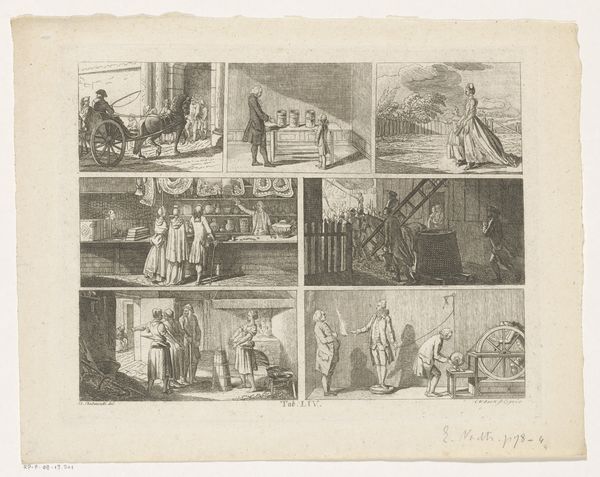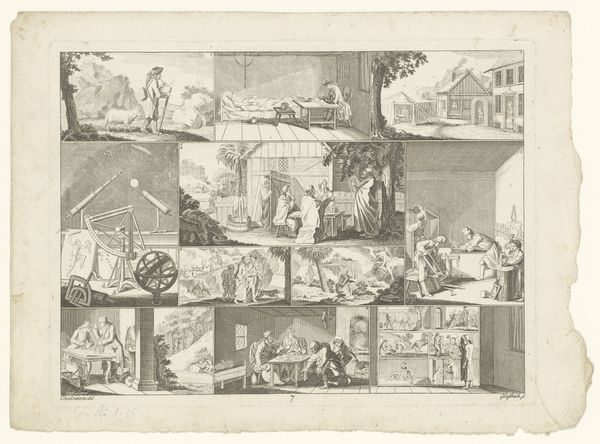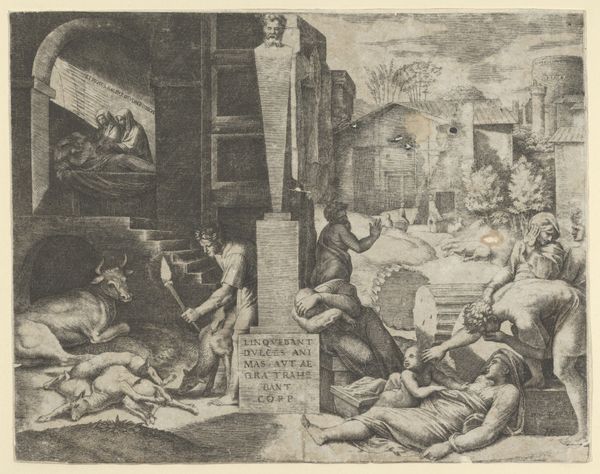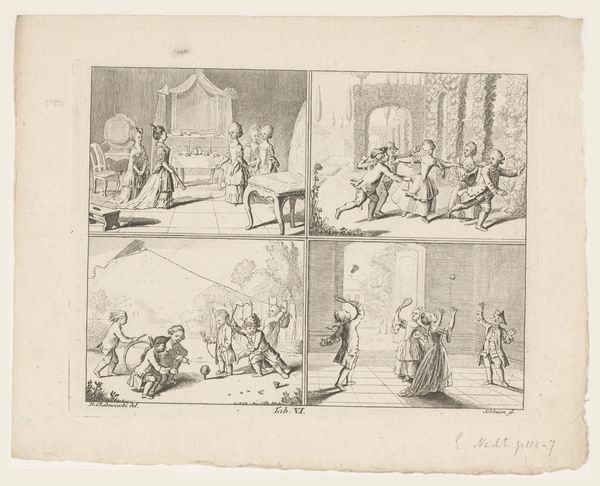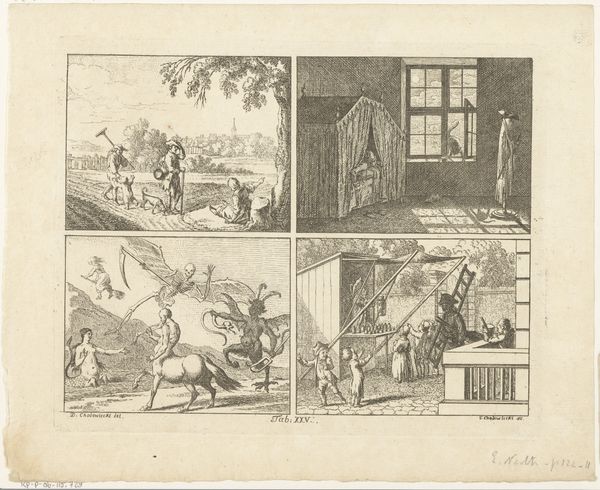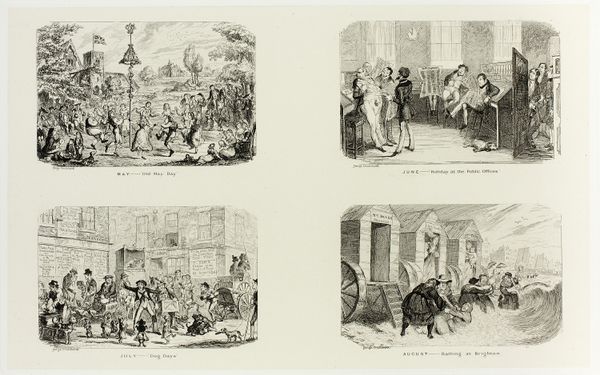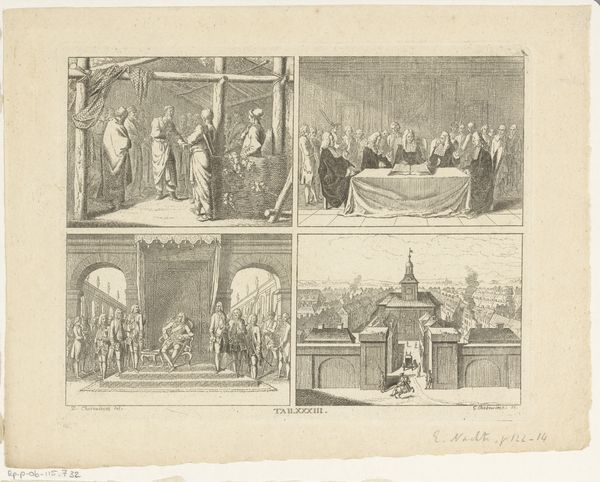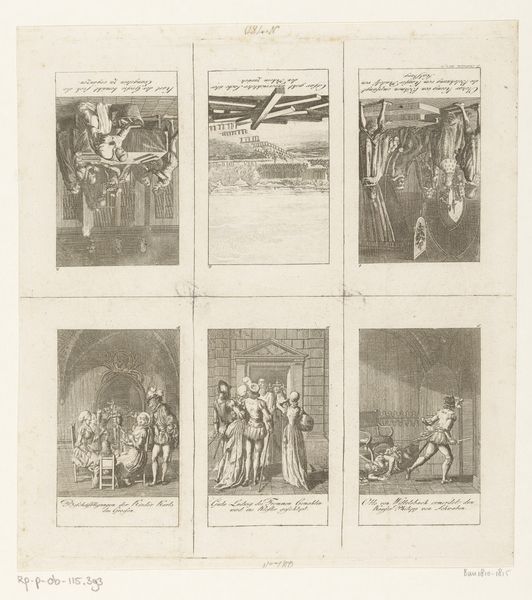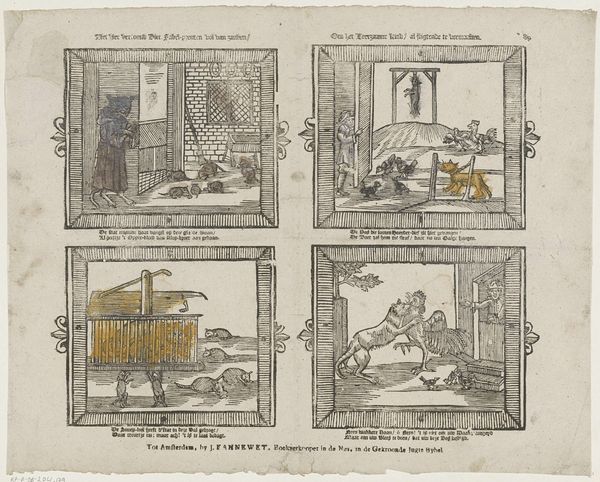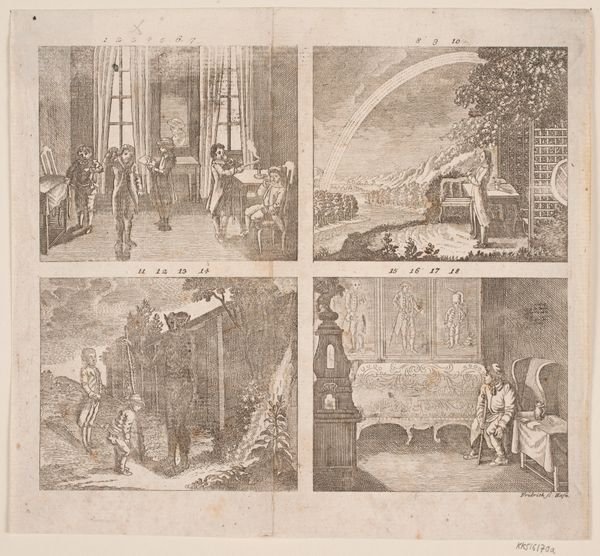
print, engraving
# print
#
genre-painting
#
history-painting
#
engraving
Dimensions: height 176 mm, width 233 mm
Copyright: Rijks Museum: Open Domain
Editor: So, this is "Vier encyclopedische voorstellingen" by Johann David Schleuen, created sometime between 1765 and 1806. It’s a print – an engraving – currently held at the Rijksmuseum. Looking at these four scenes, I am struck by how they depict various forms of labor. What’s your take on this work? Curator: You've hit on something crucial – labor is key here. Each scene highlights a different manufacturing process: metalworking, coach building, butchery, and transport. Notice the detail given to each step of the production. It isn't just about the final product, but the materiality of the whole process. The roughness, sweat and labor poured into each of these processes. We aren't seeing pretty finished goods; we're seeing production. It almost removes "Art" from the equation in its utilitarian intent. What materials were used, how much labour was needed. This piece also challenges any highbrow notions we have about art by highlighting ordinary lives of skilled workers during that era and showcasing different material processes that were at play. Editor: I see what you mean! It is interesting to see how the engraving brings forward this aspect of manufacturing. By emphasizing the 'how' rather than the 'what', it almost levels the playing field between what we consider art and the 'everyday'. What was the market for works like these? Curator: This likely served a pedagogical purpose as a plate within an encyclopaedia or manual – designed to educate the public about manufacturing processes. It reveals a shift towards a more secular and materialist worldview. Each of these forms part of a greater interconnected economic structure. These weren't luxury goods; they were fundamental processes. It served as a manual for societal operations more so than artistic self-expression. This reframes our approach toward prints - their use as information tools versus being simply decorations. Editor: I hadn't considered it in terms of secularism or materialist viewpoints. Viewing it in that way gives us much insight. Curator: Indeed. By shifting our focus to the materials, labour, and means of production, this seemingly straightforward engraving becomes a window into the values and priorities of its time.
Comments
No comments
Be the first to comment and join the conversation on the ultimate creative platform.
